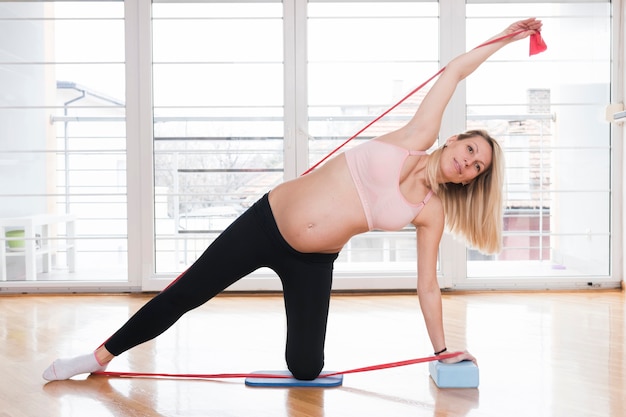
Pregnancy is an exciting yet challenging time, and incorporating exercise into your routine can make a big difference. While some people assume it’s unsafe to exercise while pregnant, the truth is the opposite—staying active has numerous benefits for both mom and baby.
Regular exercise during pregnancy promotes better health, reduces excessive weight gain, eases back pain, and even makes labor and delivery smoother. It can also give your baby a healthier start in life. Beyond that, exercise improves heart health, stamina, mood, energy levels, digestion, and sleep. It strengthens bones, muscles, and joints and prevents issues like constipation and fatigue. However, it’s essential to choose the right kind of exercise for your stage of pregnancy and consult your healthcare provider before starting anything new.
### Benefits of Exercise During Pregnancy
Staying active while pregnant helps reduce back issues, prepares your body for childbirth, and may positively impact your baby’s health. Even if you’ve never exercised before, you can start with low-impact routines and gradually increase as you feel comfortable. Activities like walking, swimming, prenatal yoga, and stationary cycling are great options. Always choose exercises that are safe and avoid overexertion.
### Recommended Exercises for Pregnant Women
Here are some excellent exercises to try:
1. **Brisk Walking**
If you’re new to exercise, walking is a great way to begin. It gets your heart pumping without putting stress on your joints. However, as your pregnancy progresses and your center of gravity shifts, be cautious about uneven surfaces and wear supportive shoes for added stability.
2. **Swimming**
Swimming provides a full-body workout that is easy on your joints. The buoyancy of the water helps relieve the strain of your growing belly. It’s important to use strokes that feel comfortable and avoid hot pools, saunas, or diving, as overheating and high-impact activities can be harmful.
3. **Stationary Cycling**
Stationary biking is a safe way to raise your heart rate without the risk of falling. Adjust the handlebars for better comfort as your belly grows, and keep your movements controlled to protect your joints.
4. **Yoga**
Prenatal yoga enhances flexibility, reduces stress, and strengthens muscles. It also helps improve posture and blood flow, which can aid during labor. Avoid poses that require lying flat on your back or overstretching, especially in the later stages of pregnancy.
5. **Low-Impact Aerobics**
These routines are designed to keep one foot on the ground, reducing stress on your joints and improving balance. Many prenatal aerobic classes are guided by instructors trained to accommodate pregnant women, making this a safe and engaging option.
6. **Pelvic Tilts and Squats**
Pelvic exercises can prepare your body for labor by strengthening your core and improving posture. Squats open up the pelvis, and pelvic tilts help relieve back pain and improve abdominal strength. Perform these exercises under proper supervision.
7. **Stomach-Strengthening Exercises**
Strengthening your abdominal muscles can alleviate back pain caused by the additional weight of pregnancy. Simple, rhythmic movements—like arching and relaxing the back while on all fours—can promote better posture and reduce discomfort.
8. **Pilates**
Light pilates tailored for pregnant women can relieve back aches, improve flexibility, and boost core strength. Always work under the guidance of a certified instructor.
9. **Barre and Dance**
Barre combines ballet-inspired movements with yoga and pilates, helping strengthen your lower body and core without the need for jumping. Light dance classes like Zumba can also be an enjoyable way to stay fit.
10. **Tai Chi**
For a gentle, meditative experience, tai chi can help improve balance and flexibility. It’s best suited for expectant mothers who already have experience with this form of exercise.
### What to Avoid While Exercising During Pregnancy
While exercise is beneficial, there are certain activities and practices you should avoid. Steer clear of exercises that:
– Involve heavy lifting or high impact (e.g., running, jumping, or contact sports).
– Require lying flat on your back after the first trimester, as this can reduce blood flow to you and your baby.
– Cause overheating or take place in humid conditions.
– Pose a risk of abdominal trauma, like skiing, horse riding, or scuba diving.
– Demand extreme balance or coordination, especially as your belly grows.
Always stop exercising if you feel pain, dizziness, faintness, shortness of breath, or contractions. Also, avoid activities that involve repetitive, jarring motions or twisting.
### Exercising Safely During Pregnancy
To safely include exercise in your routine:
– Warm up for 5 minutes at the start and end with gentle stretching.
– Stay hydrated by drinking water before, during, and after exercise.
– Wear comfortable, loose clothing and supportive shoes.
– Avoid exercising after eating heavy meals; wait for at least an hour.
– Stop if you feel any abnormal symptoms, such as cramps, vaginal bleeding, or shortness of breath.
– Listen to your body—don’t exercise to the point of exhaustion, and aim for moderate intensity.
Remember, physical changes during pregnancy such as shifting weight, hormonal effects on joints, and altered balance will impact your ability to exercise. It’s vital to choose low-impact activities and adjust routines as needed. Working with a professional trainer or joining prenatal classes can make this easier.
### Post-Pregnancy Exercise
After giving birth, ease back into exercise gradually. Most women can begin light activities a few weeks after a natural delivery or around six weeks post-C-section. Always consult your doctor first. Focus on exercises that help rebuild strength, especially in your core and pelvic area.
### The Bottom Line
Exercising while pregnant can significantly improve your physical and mental well-being while preparing your body for childbirth. Activities such as walking, swimming, yoga, and low-impact aerobics are not only safe but highly beneficial. By choosing the right exercises and keeping your healthcare provider involved, you can ensure a healthier and happier pregnancy for both you and your baby.